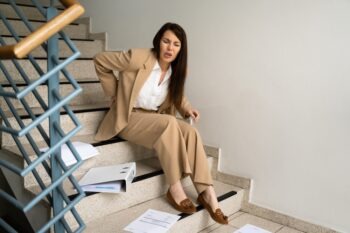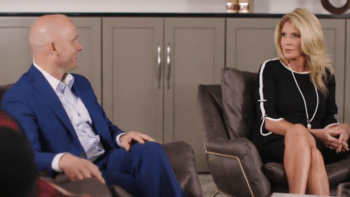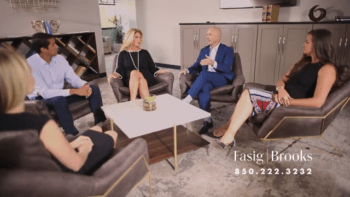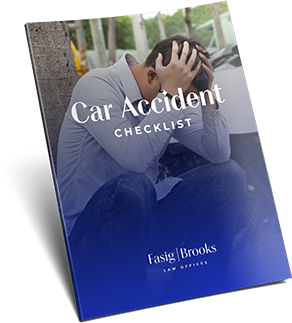
When you are hurt on someone else’s property, you may be entitled to compensation for your injuries. Under premises liability law, a property owner can be held liable for certain injuries sustained by visitors who were on their land. If you or someone you love has been injured due to the negligence of a property owner, you should consult with an experienced Jacksonville premises liability lawyer as soon as possible.
The Jacksonville personal injury lawyers at Fasig | Brooks are available to speak with you about your premise liability questions in specific detail, including the nature of your injuries, the accident, and how we can help you get the compensation that you are legally entitled to as a result of the defendant’s failure to keep you safe.
No matter who you are seeking compensation from, whether it is an insurance policy, a surety company, or the responsible individual directly, you deserve legal support. Learn more about how we can help.
What Is Premises Liability?
When you visit someone else’s property, you have every legal right to expect that they have taken the appropriate precautions to keep you safe from harm.
This includes addressing any hazards on the property, properly warning you of any risks present, and maintaining the property to ensure that visitors can stay safe whether inside a building, on a public sidewalk, or a government building.
Simply put, if you are injured on any property that is not your own and you were there lawfully, then you may have the right to pursue compensation. Many accidents that result in premises liability claims happen in locations such as:
- Government buildings
- Retail stores
- Amusement parks
- Commercial properties
- Public parks
- Swimming pools
- Private properties
If a property manager or owner neglects to address hazards that put visitors at risk, people can become seriously injured or suffer fatal accidents. A Jacksonville premises liability attorney can investigate and help you to hold negligent property owners accountable for damages.
Award-winning and Experienced Attorneys Available 24/7
Proving Negligence in a Personal Injury Claim
A premise liability happens when someone is injured due to unsafe conditions on a property that they are visiting. Given this very general definition, you can imagine that a wide range of cases fall under this legal umbrella. To determine whether or not you are the victim of premise liability, there must be a few factors present in the situation:
- The defendant owed you a duty of care and had a responsibility to keep their property safe from hazards for visitors
- There was a dangerous condition or other hazards that the responsible party had a reasonable ability to resolve or to warn you of, and they failed to do so
- This failure resulted in an accident that caused you injury
Award-winning and Experienced Attorneys Available 24/7
Accidents that Result in Premises Liability Claims
Some of the most common premise liability cases are the ones listed below:
Slip and Fall
A slip and fall is any injury that happens when someone, as the name suggests, slips and falls because of a hazard. One of the most common types of slip and falls is because of wet floors, such as spills in a grocery store, dangerous stairs, or faulty flooring that causes a visitor to fall. Working with a premises liability attorney in Jacksonville can help ensure that you recover the maximum compensation possible for your medical treatment and other losses.
Negligent Security
If you are on someone else’s property and you are the victim of an assault, a robbery, or any other sort of crime, then it may be determined that the owner (or another liable party) should have taken better precautions to keep you safe from these types of situations as a guest of their property.
Improper Maintenance
If you fall into a hole in a floor, or down the stairs because of a broken handrail, these are just two examples of possible issues of improper maintenance that can result in a premise liability case. Business owners and managers are expected to keep their properties maintained in order to avoid these types of injuries and are responsible for any failure to do so.
Dog Bites
Animal attacks, specifically dog bites, are another common premise liability case. If you were on someone else’s property and were attacked by an animal owned by the owner of the property, then you may be able to pursue a premise liability case.
Swimming Pool Accidents
If someone is injured in a swimming pool on the property of another, then they may have a case for premises liability. The owner of the pool must take the proper steps to ensure that visitors are kept safe, and if they fail to do so, then they can be held liable for any resulting injuries. A Jacksonville premises liability lawyer can investigate to determine if local safety regulations have been violated.
Amusement Park Accidents
Amusement park accidents are unfortunately a common occurrence that can have serious consequences. These accidents can range from minor injuries to fatal incidents and can happen due to various reasons such as mechanical failures, operator error, or even visitor negligence.
Even something as simple as a slippery floor or the lack of a warning sign can result in severe injuries, so it’s important to work with a premises liability lawyer in Jacksonville to determine if the park can be held responsible for your medical expenses, lost wages, and other damages
Frequently Asked Questions About Premise Liability
During our initial consultation, we will be able to go through a wide range of questions that you likely have about your situation, and we will be able to provide you with specific answers. In the meantime, take a look at some of these general answers to common questions that we are happy to answer.
Who Is at Fault for a Premise Liability Personal Injury?
Determining who is at fault for your injuries is one of the first steps that a Jacksonville personal injury attorney will take, and it can be a lot more complicated than you may initially suspect. There may be many different parties who have different degrees of responsibility for the safety and maintenance of the property.
Most often, the property owner is liable; however, the property may be leased, the maintenance may be contracted to a third party, or a surety company may represent a bonded insurance company that was performing work in a public area.
Many parties can share liability, so it’s important to work with a lawyer to pursue all avenues of compensation.
How Much Is My Premise Liability Case Worth?
Like any personal injury case, many specific factors need to be calculated to determine how much a victim is owed following their accident. Medical bills and impacts to earnings are both highly specific to the victim’s life, and there are many other unique variables that we will need to calculate before reaching a comprehensive amount that we will then be able to aggressively negotiate on your behalf.
We will work with you to identify and calculate all of the damages that you have suffered, both economic and non-economic. Insurance companies typically push back more aggressively on non-economic damages, simply because they are so hard to quantify. We will not back down as we fight for your rights.
Do I Need a Lawyer to File a Premise Liability Injury Claim?
There is no legal requirement for a victim of any personal injury to hire an attorney, but just because there is no requirement does not mean that working with an experienced professional is not necessary. While you are trying to focus on recovering from your injuries, the last thing you should need to worry about is handling negotiations with an insurance company at the same time.
One of the insurance company’s main focuses is to limit the amount paid out for any individual claim, meaning that they are highly experienced in reducing claim amounts. It only makes sense to bring an experienced representative to the table to give yourself the best chance of a fair outcome.
Contact a Premises Liability Law Firm in Jacksonville Now For a Free Initial Consultation
The sooner you reach out to our firm, the sooner we will be able to begin representing you through this process so that you can focus on getting your life back on track without being weighed down by additional stress.
Scheduling an initial consultation is quick and easy, but this simple step is enormously important for recovering from this traumatic and painful experience. Contact Fasig | Brooks today.




